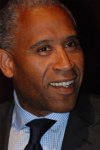A leading campaigner for racial equality in the UK has questioned interracial adoptions. 
Simon Woolley, head of Operation Black Vote (OBV), has attacked the Government’s moves to make it easier for white couples to adopt black children.
In a open letter on OBV’s website, Mr Woolley suggested that the new policy, announced by Education Secretary, Michael Gove, who was himself adopted as a child, lacked racial sensitivity.
He accused the Government’s policy of being “crude” and lacking understanding of “the racialised world we live in, that all too often ignores a globalised ‘white privilege status’.”
Black parents, on the other hand were “uniquely placed to help their children navigate through this cultural-political minefield with self confidence and self worth,” he added.
Mr Woolley also said he wasn’t “entirely convinced” that white families should adopt Black or mixed heritage children.
If they did, they needed to show “how they understand these racial dynamics with a clear demonstration as to how they might mitigate their own and society’s euro-centric world view”.
He continued: “If those seeking to adopt fail to understand these racial dynamics, they might save the child from care homes but will almost certainly leave the child with either a confused and disjointed sense of belonging or at worst a life long feeling of self hatred.”
The Government’s policy does not change the law but clarifies that race should not be a “deal breaker” if the prospective adopters show they are able to parent the child.
The Department for Education confirmed that guidelines will state explicitly that, where a family can meet a child’s emotional and development, ethnic origin should not be a barrier.
Barring adoption on ethnic grounds “is not child-centred and is unacceptable”, says the Government’s new document, which is to be the basis of guidelines issued to local authorities and adoption agencies. “
A prospective adopter is able to parent a child with whom they do not share the same ethnicity, provided they can meet the child’s other identified needs.















